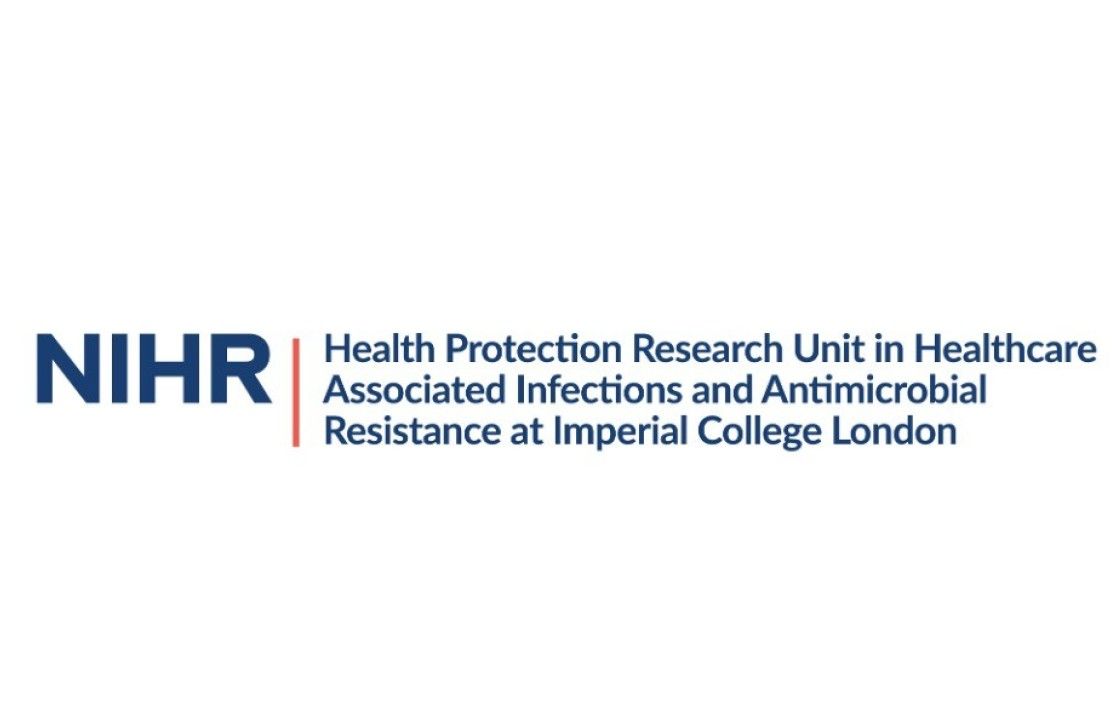Results
- Showing results for:
- Reset all filters
Search results
-
Journal articleHolmes AH, Holmes M, Gottlieb T, et al., 2018,
End non-essential use of antimicrobials in livestock
, BMJ, Vol: 360, ISSN: 0959-8138 -
Journal articleSharma H, Smith D, Turner CE, et al., 2018,
Clinical and Molecular Epidemiology of Staphylococcal Toxic Shock Syndrome in the United Kingdom
, Emerging Infectious Diseases, Vol: 24, Pages: 258-266, ISSN: 1080-6040 -
Journal articleLishman H, Aylin P, Alividza V, et al., 2017,
Investigating the burden of antibiotic resistance in ethnic minority groups in high-income countries: protocol for a systematic review and meta-analysis.
, Systematic Reviews, Vol: 6, ISSN: 2046-4053Background: Antibiotic resistance (ABR) is an urgent problem globally, with overuse and misuse of antibioticsbeing one of the main drivers of antibiotic-resistant infections. There is increasing evidence that the burden ofcommunity-acquired infections such as urinary tract infections and bloodstream infections (both susceptible andresistant) may differ by ethnicity, although the reasons behind this relationship are not well defined. It has beendemonstrated that socioeconomic status and ethnicity are often highly correlated with each other; however, it isnot yet known whether accounting for deprivation completely explains any discrepancy seen in infection risk. Therehave currently been no systematic reviews summarising the evidence for the relationship between ethnicity andantibiotic resistance or prescribing.Methods: This protocol will outline how we will conduct this systematic literature review and meta-analysisinvestigating whether there is an association between patient ethnicity and (1) risk of antibiotic-resistant infectionsor (2) levels of antibiotic prescribing in high-income countries. We will search PubMed/MEDLINE, EMBASE, GlobalHealth, Scopus and CINAHL using MESH terms where applicable. Two reviewers will conduct title/abstract screening,data extraction and quality assessment independently. The Critical Appraisal Skills Programme (CASP) checklist will beused for cohort and case-control studies, and the Cochrane collaboration’s risk of bias tool will be used for randomisedcontrol trials, if they are included. Meta-analyses will be performed by calculating the minority ethnic group to majorityethnic group odds ratios or risk ratios for each study and presenting an overall pooled odds ratio for the two outcomes.The Grading of Recommendations, Assessments, Development and Evaluation (GRADE) approach will be used to assessthe overall quality of the body of evidence.Discussion: In this systematic review and meta-analysis, we will aim to collate the avail
-
Journal articleHernandez Perez B, Herrero Viñas P, Miles Rawson T, et al., 2017,
Supervised Learning for Infection Risk Inference Using Pathology Data
, BMC Medical Informatics and Decision Making, Vol: 17, ISSN: 1472-6947Background: Antimicrobial Resistance is threatening our ability to treat common infectious diseases and overuse of antimicrobials to treat human infections in hospitals is accelerating this process. Clinical Decision Support Systems (CDSSs) have been proven to enhance quality of care by promoting change in prescription practices through antimicrobial selection advice. However, bypassing an initial assessment to determine the existence of an underlying disease that justifies the need of antimicrobial therapy might lead to indiscriminate and often unnecessary prescriptions.Methods: From pathology laboratory tests, six biochemical markers were selected and combined with microbiology outcomes from susceptibility tests to create a unique dataset with over one and a half million daily profiles to perform infection risk inference. Outliers were discarded using the inter-quartile range rule and several sampling techniques were studied to tackle the class imbalance problem. The first phase selects the most effective and robust model during training using four-fold stratified cross-validation. The second phase evaluates the final model after isotonic calibration in scenarios with missing inputs and imbalanced class distributions. Results: More than 50\% of infected profiles have daily requested laboratory tests for the six biochemical markers with very promising infection inference results: area under the receiver operating characteristic curve (0.80-0.83), sensitivity (0.64-0.75) and specificity (0.92-0.97). Standardization consistently outperforms normalization and sensitivity is enhanced by using the SMOTE sampling technique. Furthermore, models operated without noticeable loss in performance if at least four biomarkers were available.Conclusion: The selected biomarkers comprise enough information to perform infection risk inference with a high degree of confidence even in the presence of incomplete and imbalanced data. Since they are commonly available in hospitals, Clini
-
Journal articleOtter JA, Doumith M, Davies F, et al., 2017,
Emergence and clonal spread of colistin resistance due to multiple mutational mechanisms in carbapenemase-producing Klebsiella pneumoniae in London
, Scientific Reports, Vol: 7, ISSN: 2045-2322Carbapenemase-producing Enterobacteriaceae (CPE) are emerging worldwide, limiting therapeutic options. Mutational and plasmid-mediated mechanisms of colistin resistance have both been reported. The emergence and clonal spread of colistin resistance was analysed in 40 epidemiologically-related NDM-1 carbapenemase producing Klebsiella pneumoniae isolates identified during an outbreak in a group of London hospitals. Isolates from July 2014 to October 2015 were tested for colistin susceptibility using agar dilution, and characterised by whole genome sequencing (WGS). Colistin resistance was detected in 25/38 (65.8%) cases for which colistin susceptibility was tested. WGS found that three potential mechanisms of colistin resistance had emerged separately, two due to different mutations in mgrB, and one due to a mutation in phoQ, with onward transmission of two distinct colistin-resistant variants, resulting in two sub-clones associated with transmission at separate hospitals. A high rate of colistin resistance (66%) emerged over a 10 month period. WGS demonstrated that mutational colistin resistance emerged three times during the outbreak, with transmission of two colistin-resistant variants.
-
Journal articleKing A, Mullish BH, Williams HRT, et al., 2017,
Comparative epidemiology of Clostridium difficile infection: England and the USA
, International Journal for Quality in Health Care, Vol: 29, Pages: 785-791, ISSN: 1353-4505 -
Journal articleRawson TM, Sharma S, Georgiou P, et al., 2017,
Towards a minimally invasive device for beta-lactam monitoring in humans
, Electrochemistry Communications, Vol: 82, Pages: 1-5, ISSN: 1388-2481Antimicrobial resistance is a leading patient safety issue. There is a need to develop novel mechanisms for monitoring and subsequently improving the precision of how we use antibiotics. A surface modified microneedle array was developed for monitoring beta-lactam antibiotic levels in human interstitial fluid. The sensor was fabricated by anodically electrodepositing iridium oxide (AEIROF) onto a platinum surface on the microneedle followed by fixation of beta-lactamase enzyme within a hydrogel. Calibration of the sensor was performed to penicillin-G in buffer solution (PBS) and artificial interstitial fluid (ISF). Further calibration of a platinum disc electrode was undertaken using amoxicillin and ceftriaxone. Open-circuit potentials were performed and data analysed using the Hill equation and log(concentration [M]) plots. The microneedle sensor demonstrated high reproducibility between penicillin-G runs in PBS with mean Km (± 1SD) = 0.0044 ± 0.0013 M and mean slope function of log(concentration plots) 29 ± 1.80 mV/decade (r2 = 0.933). Response was reproducible after 28 days storage at 4 °C. In artificial ISF, the sensors response was Km (± 1SD) = 0.0077 ± 0.0187 M and a slope function of 34 ± 1.85 mv/decade (r2 = 0.995). Our results suggest that microneedle array based beta-lactam sensing may be a future application of this AEIROF based enzymatic sensor.
-
Journal articleBoyd S, moore LSP, Rawson TM, et al., 2017,
Combination therapy for carbapenemase-producing Entero-bacteriaceae: INCREMENT-al effect on resistance remains unclear
, The Lancet Infectious Diseases, Vol: 17, Pages: 899-900, ISSN: 1473-3099 -
Journal articleKnight GM, Costelloe C, Murray KA, et al., 2017,
Addressing the unknowns of antimicrobial resistance: quantifying and mapping the drivers of burden
, Clinical Infectious Diseases, Vol: 66, Pages: 612-616, ISSN: 1058-4838The global threat of antimicrobial resistance (AMR) has arisen through a network of complex interacting factors. Many different sources and transmission pathways contribute to the ever-growing burden of AMR in our clinical settings. The lack of data on these mechanisms and the relative importance of different factors causing the emergence and spread of AMR hampers our global efforts to effectively manage the risks. Importantly, we have little quantitative knowledge on the relative contributions of these sources and are likely to be targeting our interventions suboptimally as a result. Here we propose a systems mapping approach to address the urgent need for reliable and timely data in order to strengthen the response to AMR.
-
Journal articleBasetti S, Hodgson J, Rawson TM, et al., 2017,
Scarlet fever: A guide for general practitioners
, London Journal of Primary Care, Vol: 9, Pages: 77-79, ISSN: 1757-1472There has been an increase in the incidence of scarlet fever with most cases presenting in General Practice and Emergency Departments. Cases present with a distinctive macro-papular rash, usually in children. This article aims to increase awareness of scarlet fever by highlighting key symptoms and stating potential complications if untreated. In patients who have the typical symptoms, a prescription of a suitable antibiotic such as phenoxymethylpenicillin (Penicillin V) should be made immediately to reduce the risk of complications and the spread of infection.
This data is extracted from the Web of Science and reproduced under a licence from Thomson Reuters. You may not copy or re-distribute this data in whole or in part without the written consent of the Science business of Thomson Reuters.

